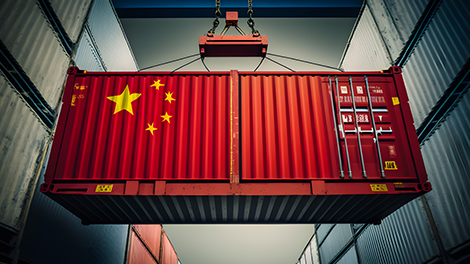In the fast-paced world of logistics and supply chain management, staying ahead of the curve is not just an advantage—it's a necessity. Adopting a lean approach to your supply chain can be a game-changer, offering a pathway to enhanced efficiency, reduced costs, and improved customer satisfaction. But what does going lean really mean, and how can you navigate the opportunities and challenges it presents?
Lean supply chain definition
A lean supply chain is one which where products are delivered to the consumer in the most efficient manner, with the least amount of waste along the way. It runs deeper than just minimising cost. It's about reducing lead time, optimising sock levels and reducing environmental impact.
At the heart of a lean supply chain is a deep understanding of customer demand. It's about getting to grips with what your customers really need, not just what we think they need. It involves closely monitoring demand patterns, staying flexible, and being ready to adapt. It's not just about meeting demand but anticipating it, ensuring that you're always one step ahead. This approach helps in aligning supply chain operations more closely with actual market needs, leading to higher satisfaction and loyalty. Survey's suggest truly customer-centric companies are 60% more profitable.
One of the pillars of the lean philosophy is the relentless pursuit of waste reduction. Waste can manifest in various forms—be it excess inventory, unnecessary transportation, waiting times, or over-processing. By identifying and eliminating these inefficiencies, you can streamline operations, reduce costs, and enhance your service offering. It's about doing more with less, ensuring every action and resource adds value to the end customer.

"Your freight forwarder can be pivotal in streamlining logistics for a lean supply chain, offering a blend of expertise and flexibility that is invaluable. By optimising routes and consolidating shipments you can see enhanced efficiency and reduced costs, all which align with the lean ethos of waste minimisation."
Liam Launders, Head of Sales at WTA
The journey towards a lean supply chain is ongoing. It's not a one-off project but a continuous cycle of evaluating, implementing changes, and assessing results. This ethos of continuous improvement, or 'Kaizen', encourages a culture where everyone is always on the lookout for ways to enhance processes, reduce waste, and better meet customer needs.
In supporting just-in-time inventory strategies, your freight forwarder can coordinate timely deliveries, reducing the need for extensive stock holdings and thereby cutting associated costs. They should be offering you advanced technology for real-time shipment tracking, providing transparency that allows for proactive decision-making and continuous process improvement. However, be mindful of the risks when running a just-in-time model.
Book a demo of our powerful visibility platform.
More than a pretty ship on a map. Simply better planning for you and your business. Get real-time visibility into order milestones, ex-factory times, arrivals times and more.
While the opportunities are vast, the path to a lean supply chain is not without its hurdles. One of the key challenges is cultural change. Shifting to a lean mindset requires buy-in from all levels of the organisation, it's about fostering a culture where everyone feels empowered to suggest improvements and challenge the status quo.
Another challenge lies in maintaining the delicate balance between reducing waste and meeting customer demand. Overzealous cost-cutting or too much emphasis on slimming down operations can lead to vulnerabilities, such as being unable to cope with sudden spikes in demand. It's crucial to maintain a level of flexibility and resilience within your lean strategy.
Adopting a lean supply chain offers significant opportunities to enhance efficiency, reduce costs, and improve customer satisfaction. By focusing on understanding customer demand, reducing waste, and committing to continuous improvement, you can drive your operations to new heights. However, it's important to navigate the challenges with care, ensuring that the shift to lean enhances rather than hinders your supply chain's resilience and adaptability.
If you are looking for support and expert advice on streamlining your supply chain WTA are here to help.







